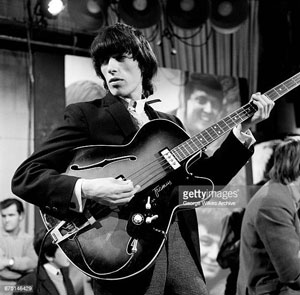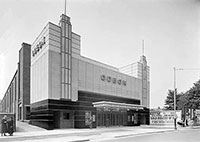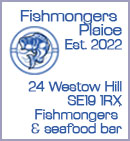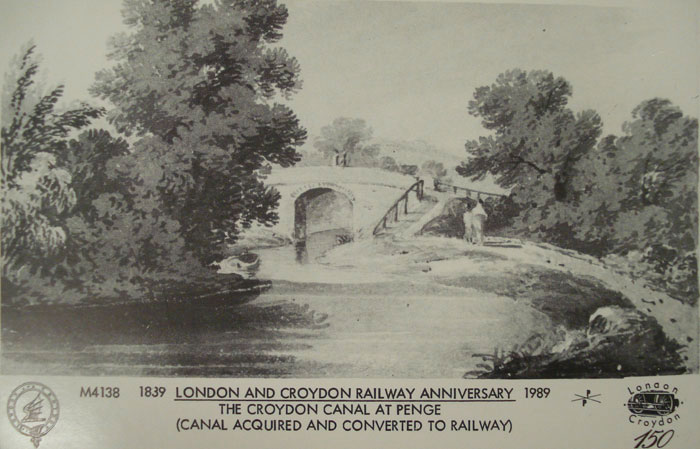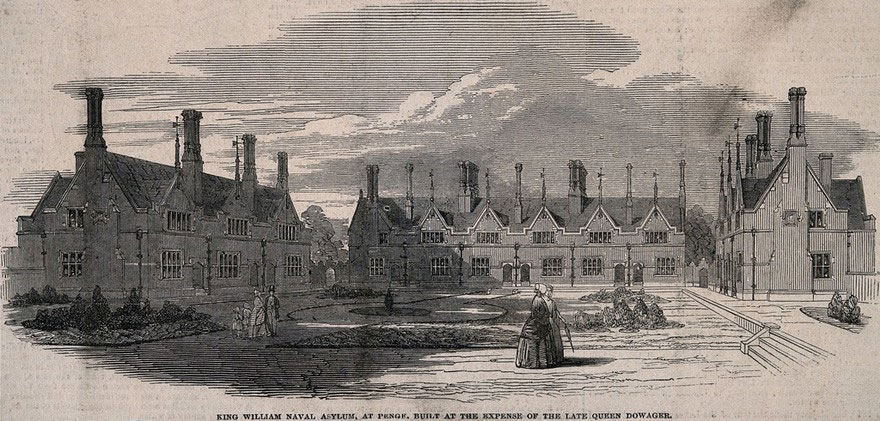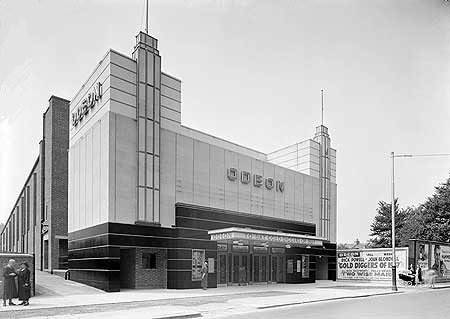
A timeline history of Anerley & Penge with prints, photographs, maps & films.
New images added on a regular basis so bookmark this page (click on images to enlarge).


Saxon Penge
Penge may have originated from Celtic for 'head or chief wood or end of the wood'.
Medieval Penge
1067 Reference to Penceat.
1086 Domesday reference to Penge having a 'a wood for fifty hogs pannage' with woodland pasture 'seven miles, seven furlongs and seven feet in circumference'
1204 Reference to Pange.
1472 Reference to Pengewode.
Georgian period
1809 Croydon Canal opened through Penge Common.
1809 Croydon Canal opened through Penge Common. the Canal was nine miles long and linked Croydon with the Thames to transport timber, lime, chalk and agricultural produce. Two reservoirs were dug at Sydenham and South Norwood (now South Norwood lake).
1827 Penge Common enclosed and William Sanderson (c. 1801 - 1871), a Scottish silk manufacturer. He built the first house in the area which he named “Anerley” which is Northern dialect for a 'lonely place’.
Print of Crooked Billet, Penge Common (pub later moved to present site on High Street).
1836 Penge Place mansion built by Edward Blore (1787-1879). Blore had just restored Lambeth Place and would later finish Nash’s Buckingham Palace.
Croydon Canal closed was sold to the London and Croydon Railway Company for £40,250. William Sanderson sold land in Anerley to the London and Croydon Railway Company but demanded his own station be added.
Early Victorian Penge & Anerley
1839 Railway built on old Croydon Canal by London and Croydon Railway.
Penge station opened by London and Croydon Railway on the High Street but closed in 1841.
Anerley Bridge Station opened by London and Croydon Railway.
1841 Waterman’s Almshouses opens on the High Street . Designed by George Porter (died 1856) in neo-Tudor style. They housed sixty Thames watermen or lightermen.
Anerley Gardens opened west of Anerley Station with regular dances, a boating lake (part of old Croydon canal), the Anerley Hotel, Swiss cottage, a maze and gardens.
1848 King William IV Naval Asylum, St. John's Road, opened. Designed by Philip Hardwick RA (1792-1870) at the expense of William IV’s widow Queen Adelaide to provide shelter for 12 widows or daughters of naval officers. Now known as the Queen Adelaide Almshouses and private residences.
1850 St Johns built on Penge High Street. Designs by architects Edwin Nash (1812-1884 ) & John Nash Round (1817-1864).
Anerley Station rebuilt in neo-Tudor style during the widening of the main line.
1853 Penge Place mansion demolished to make way for the Crystal Place Exhibition.
The Old Lodge (1-3 Lawrie Park Road?) remains.
1854 Crystal Palace Exhibition moved to old Penge Place park. Designed by Joseph Paxton (1803-1865).

Mid Victorian Penge & Anerley
1860s Large Victorian houses were built along Anerley Road.
Stanfords map of Penge.
1863 Penge Bridges station(later Penge West) opened by London, Brighton and South Coast Railway.
Penge Lane station (later Penge East) opened by London, Chatham and Dover Railway.
1865 Anglican church of St Paul’s was built on Hamlet Road in Upper Penge.
Edward Richards Adams (1818-1872) leased many properties in Anerley Road for building development.
1868 Anerley Gardens closed due to completion from Crystal Palace Exhibition.
1871 William Sanderson’s died and the Anerley Lodge estate was sold off in two phases.
1872 Penge Police Station opened on the corner of Penge High Street and Penge Lane. Earliest police station in London.
1877 A murder in Forbes Road led to decline in Penge's popularity. Forbes Road renamed Mosslea Road to avoid notoriety.
1878 Anerley Vestry Hall built on Anerley Road.
Late Victorian Penge & Anerley
1888 Penge Recreation Ground opened to the public off the High Street.
1891 Alexandra Recreation Ground is one of the seven Penge Parks and the one of the last surviving remnants of Penge Common. Named after Princess Alexandra (1844-1925), the wife of King Edward VII. A road which borders the park is named after her as well, plus a pub in Parish Lane.
Edwardian Penge & Anerley
1900 Anerley Vestry Hall became Anerley Town hall.
Tram on High Street
Bus on High Street
1908 Bartholomew's map
1910 Kings Hall Electric Theatre opened as a cinema at 174 High Street, Penge.
Chesham Park opened to the public.
1915 Empire Theatre opened at 130 High Street. Designed by WGR Sprague (1863-1933).
Interwar Penge & Anerley
1920 Kings Hall by Cecil Masey (1880-1960). Rebuilt and enlarged old Kings Hall Electric Theatre. Now had a two storey facade in white Portland stone with a seating capacity of 1,200.
1921 Street market established in Maple Road.

1923 Penge stations renamed Penge West & Penge East.
1925 War memorial added to High Street at the entrance to Penge Recreation Ground.
1928 Betts Park opened, named after mother of Frederic Betts, Sarah Betts. Frederic betts was a property developer. Part of the Croydon Canal is contained in the park,
1930 Stephen Gee (1873-1956) purchased the remainder of the Gertrude Grose owned part of Chesham Park
1931 Beckenham County School for Boys moved to High Street, Penge.
1936 Crystal Palace Exhibition destroyed in a fire.
1937 Odeon Penge opened at 162 High Street Penge. Designed by Andrew Mather (1891-1938).
Anerley & Penge in WW2
1941 Penge Empire closed
1944 German V1 Flying bombs led to many deaths plus houses damaged including Paxton Arms pub.
Beckenham County School for Boys became the Beckenham and Penge County Grammar School.
Postwar Penge & Anerley
1947 Future Rolling Stone Bill Wyman (b. 1936) attended Beckenham and Penge County Grammar School.
1950 Empire Theatre renamed Essoldo Cinema.
1951 Queen Adelaide Court opened on Queen Adelaide Road. Designed by the renowned housing architect Edward Armstrong (1896-?).
1950s OS National Grid map showing Essoldo, Odeon & Kings Hall cinemas plus Beckenham Grammer.
1955 Kings Hall became Gaumont Penge.
1958 Gaumont Penge closed down.
1960 Essoldo Cinema (ex-Empire Theatre) closed down. Site now named Empire Square.
1965 Penge & Anerley became part of London Borough of Bromley.
1969 Beckenham and Penge County Grammar School moved to Eden Park as the Langley Park School for Boys.
1973 Waterman¹s Almshouses residents moved to a new site in Hastings. Almshouses converted into private homes.
1976 Odeon Penge closed on High Street Penge. Later a Bingo Hall.
198? Part of Winsford House off the Croydon Road between Burmarsh Court and Benwick Court, opened as Winsford Gardens.
1986 Film of Maple Road market.
1994 Odeon Penge building demolished.
2010 Penge Police Station closed.
Penge West & Anerley stations now served by London Overground as well as mainline trains.Booklist:
Retracing Canals To Croydon and Camberwell - Brian J. Salter (1986 Living History Publications)
London and Croydon Railway - Adrian Prokcter (1989 London Reference Books)
Book of Penge, Anerley and Crystal Palace: The Community, Past Present and Future by Peter Abbott (2002 Halsgrove)
Making of a London Suburb - Martin Spence (2007 Merlin Press)
|
More South London History Timelines |
|---|
